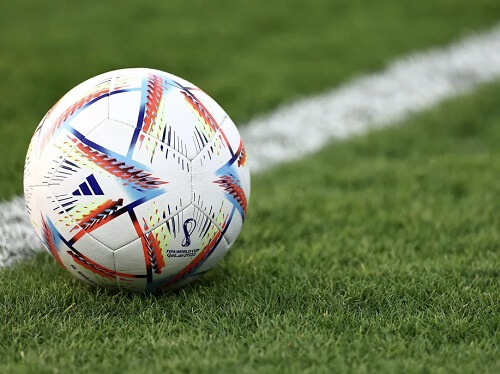The Game-Changing Tech behind The World Cup’s New High-Tech Ball

The Arabic word for “the journey,” Al Rihla, gives the ball a unique appearance, but something more significant will make people remember it. The ball makes use of a sensor that gathers real-time spatial positional information. This system’s most evident advantage is that it will expedite rulings like offside much more. That solves the issue of decision-making speed, which is a major complaint among supporters of the existing Video Assistant Referee (VAR) setup. A breath of fresh air-finally.
The tournament has had its best moments yet, and if you cannot make it to Qatar, you can enjoy some piece of the action when you download Betway apps to bet on the remaining games.
The World Cup system is now semi-automated; while most of it will be run by AI, there will still be a human component. How precisely does it operate? Well, the sensor in place catches up each contact made on the ball at a rate of 500 frames per second, whether it be a header, kick, pass, or anything else. This is paired with HawkEye optical camera tracking technology, which is most known for its tennis-related applications but has also been used to monitor cricket balls. This ideal pairing of a sensor with HawkEye enables considerably speedier offside determinations and will lessen the frequency of stoppages brought on by an offside call.
Before FIFA authorized the technology for this year’s World Cup, it underwent testing for roughly six years. The system as it is now isn’t the final version; instead, enhancements will be made based on real-time input that will come in as the competition progresses.
The fact that such information may be utilized for reasons more than merely officiating, though, is what makes this such a game-changer. By presenting broadcasters with fresh avenues for enlightening, enlightening, and analyzing football games for spectators, it may also alter how the game is seen. Further, it may result in new camera viewpoints or enable spectators to see the game from fresh vantage points.
How players and teams practice for games in the future will depend on the kind of data that can be gathered from the ball. A data-driven strategy is now essential for football success at all game levels. Having more data at their disposal will only encourage teams to work harder to identify more areas for improvement and close the gap with better competitors. Similar data can be used in Betway betting analysis for fans, as it will help fans get a better understanding of teams and individuals going into matches.
While the FIFA World Cup 2022 will likely continue to be known as the tournament of controversy, at least for the time being, there is a good potential that it may also further entwine the worlds of technology and football.
These and related technologies have been tested in real-world settings for many years. Earlier this year, a more recent arrangement was employed during a German academy club game. In 2018, KINEXON’s sensor-infused ball and jersey tracking were used in Germany’s fourth-tier Regionalliga to offer real-time data to a live TV broadcast. In contrast, the UEFA Champions League group-stage matches during the early part of this season in preparation for the World Cup have been broadcast with the Hawk-Eye camera system.
In the end, such possibilities are all but inevitable. However, the firms concerned are sure they have satisfied all requirements for bringing this new technology into the world’s most significant soccer tournament.
The tournament enters the semifinal stage on Tuesday, and you can bet on all two clashes with Betway for a chance to win big.
